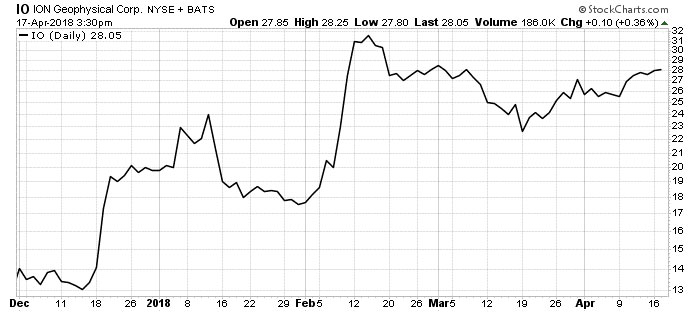I’ve got a simple question for you.
Who knows best how a company will perform in the future?
Many parties have a solid idea. Wall Street analysts follow public companies every day. They attend earnings calls and company meetings to gather inputs. Then they crunch the data in their models.
Hedge funds, pensions, individuals and others interested in a stock do the same.
But they’re all trying to assess how the market will react to what the company does. And who knows that better than a company’s officers and directors? They’re in the best position to know how the firm will perform in the future.
The Securities and Exchange Commission refers to these folks as “insiders.” And I’ve found following their actions is worthwhile … especially when they are buying their own company’s stock.
Let’s consider some examples…
Insider Buying Signals All Is Well to the Market
In mid-December, seven insiders at Houston-based Ion Geophysical Corp. (NYSE: IO) bought more than 200,000 shares of their company’s stock. Shares proceeded to zoom higher:

Likewise, shares of clothing retailer J.Jill Inc. (NYSE: JILL) rose 9% on April 17. One of the company’s directors had purchased 100,000 JILL shares the prior week.
The director had served on the board since early last year, but this was his first buy with his own money. We call this an open market purchase.
I don’t want to mislead you. These signals aren’t perfect.
Shares can, and do, fall after insiders buy. We must be careful.
However, the two examples above shared something in common. The buys in each situation were rare.
And I recently unearthed a stock that just saw its first-ever insider buying.
This Stock Could Double From Here
Four different insiders recently bought 32,000 shares of real estate investment trust (REIT) Colony NorthStar Inc. (NYSE: CLNS).
This had never happened before … but the timing looks solid.
The price of this REIT has struggled ever since Colony Capital merged with NorthStar Asset Management Group and NorthStar Realty Finance early last year:

(Source: Bloomberg)
The red symbols show when insiders sold shares, and the green symbols show when they bought shares.
I owned shares of two of these companies until just before the merger. My decision to exit at the time was opportune, but now the script has flipped.
Bloomberg analysts expect sales to rise by 28% this year, and 11% the next.
Colony NorthStar’s 500 employees manage $43 billion of assets from 18 offices around the world. It owns properties in the health care, industrial and hospitality sectors, and manages third-party money, too.
Tom Barrack is the chairman. He knows how to run a real estate firm.
Billionaire Robert Bass recruited Barrack to do real estate deals in the 1980s. In 1990, Barrack founded Colony Capital with funding from Bass and GE Capital.
The fund’s first item of business was to buy secured loans that came into existence after the savings and loan crisis. Nearly one-third of these firms failed between 1986 and 1995. Barrack helped move their assets. The deals were quite profitable.
Barrack also has extensive international real estate experience.
The market cap of Colony NorthStar has fallen by more than half since the merger. But insiders are buying for the first time ever since then. This is a signal the current price may be temporary.
Plus, the REIT will pay you a 7.7% yield while you wait for the reversal.
This is an intriguing opportunity. I encourage you to consider it.
Good investing,

Brian Christopher
Senior Analyst, Banyan Hill Publishing
Editor’s Note: Main Street Americans who’ve discovered “Kennedy Accounts” have been setting themselves up for a fortune. And now it’s your turn to find out how it’s possible to turn a $50 stake into as much as $50,000, $100,000 or perhaps even as much as $200,000 over time. You’ll be shocked when you learn how easy it is to get started. To see what makes Kennedy Accounts the most powerful investing strategy on the planet, simply click here now.




